Skilte med særlige regler
- 1/57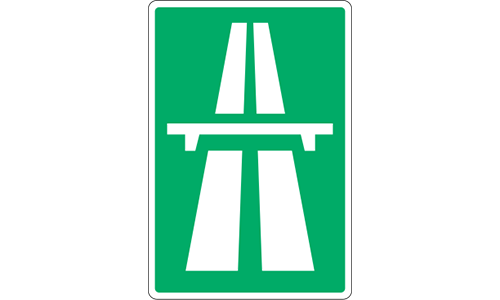
Dette tegn indikerer, at du går ind i en motorvej. Motorways har specifikke regler, typisk inklusive højere hastighedsgrænser, begrænsninger for visse typer køretøjer og ingen fodgænger- eller cykeladgang, hvilket sikrer højhastigheds, uafbrudt trafikstrøm.
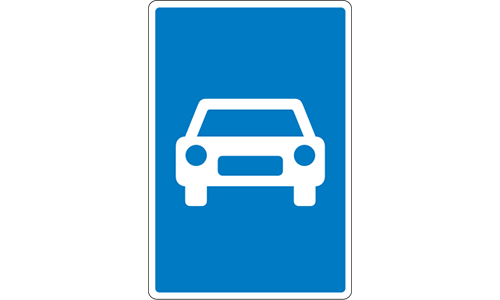
Dette tegn indikerer, at du går ind på en motorvej. Expressways er typisk højhastighedsveje med begrænset adgang, designet til effektiv gennemtrafik og kan have forskellige regler fra motorveje afhængigt af jurisdiktion.
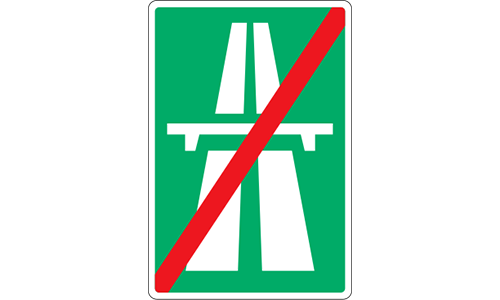
Dette tegn markerer afslutningen på en motorvej. Når de vedtager dette tegn, gælder de specifikke regler og forskrifter, der gælder for motorveje, ikke længere, og chauffører vil være underlagt reglerne for den vej, de overgår til, hvilket kan omfatte lavere hastighedsgrænser eller forskellige trafikforhold.
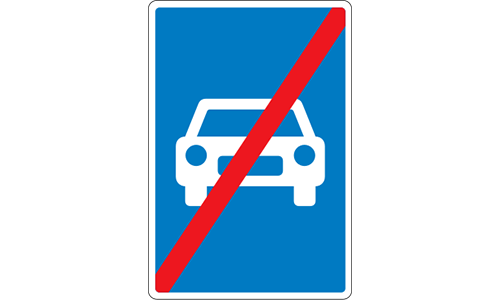
Dette tegn indikerer afslutningen på en motorvej. Chauffører skal være opmærksomme på, at de specifikke regler og egenskaber ved en motorvej ikke længere gælder, og de skal tilpasse deres kørsel til de nye vejforhold og generelle trafikregler.
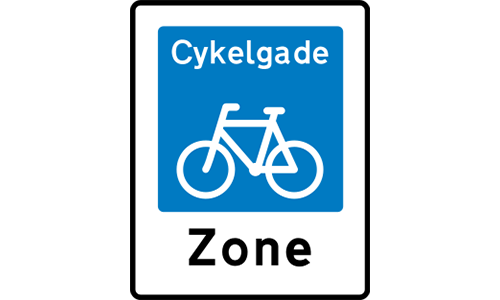
Dette tegn indikerer begyndelsen på en cykel Boulevard. Dette er gader, der er specifikt designet til at prioritere cykeltrafik, ofte med trafik beroligende foranstaltninger, reducerede hastighedsgrænser for motorkøretøjer og specifikke regler for interaktion mellem cyklister og andre trafikanter for at forbedre sikkerheden.
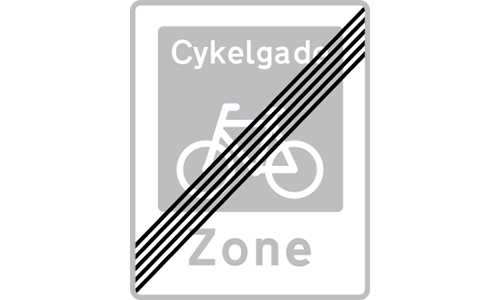
Dette tegn markerer afslutningen på en cykelboulevard. De særlige regler og prioritet, der gives cyklister inden for Boulevard, gælder ikke længere, og trafikanter skal vende tilbage til generelle trafikregler, der gælder for den vej, de nu er på.
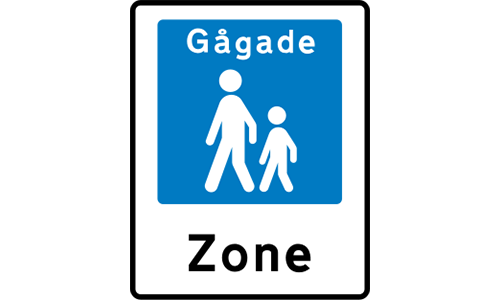
Dette tegn indikerer begyndelsen på en fodgængerzone. Inden for denne zone prioriteres fodgængere, og køretøjsadgang er ofte stærkt begrænset eller kontrolleret, typisk med meget lave hastighedsgrænser eller specifikke tidspunkter for leveringskøretøjer, for at sikre menneskers sikkerhed og komfort til fods.
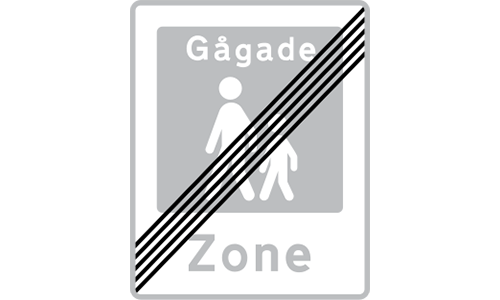
Dette tegn markerer afslutningen på en fodgængerzone. De særlige regler, der prioriterer fodgængere, gælder ikke længere, og chauffører skal være opmærksomme på, at normale vejtrafikregler, herunder potentiel køretøjsadgang og forskellige hastighedsgrænser, CV.
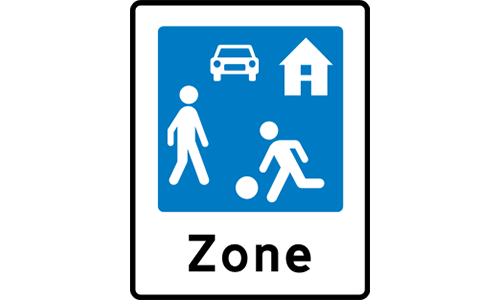
Dette tegn indikerer begyndelsen på en levende gade, ofte kendt som et delt rum eller leggade. I sådanne områder har fodgængere typisk prioritet frem for køretøjer, leg er tilladt, og køretøjer skal køre i gåtempo og udøve ekstrem forsigtighed på grund af tilstedeværelsen af forskellige trafikanter.
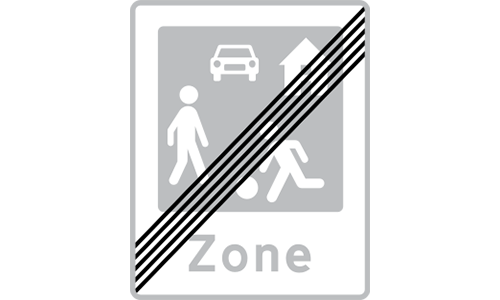
Dette tegn markerer afslutningen på en levende gade. De særlige regler for delte rum, såsom fodgængerprioritet og hastigheder for gåture, gælder ikke længere, og generelle vejregler og hastighedsgrænser genoptages for det kommende vejafsnit.

Dette tegn indikerer begyndelsen på en zone med trafik beroligende foranstaltninger. Drivere bør forvente forskellige funktioner, der er designet til at reducere køretøjets hastighed, såsom hastighedsstød, chikaner eller indsnævrede veje, implementeret for at forbedre sikkerheden for fodgængere og cyklister og forbedre boligkvaliteten.
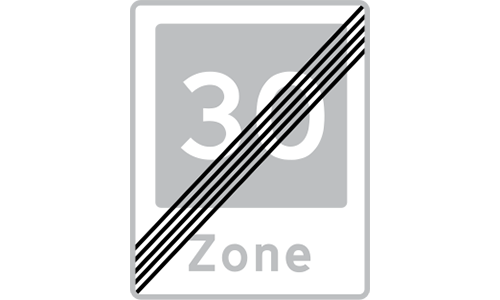
Dette skilt markerer afslutningen på en zone med trafik beroligende foranstaltninger. Drivere er ikke længere forpligtet til at overholde de reducerede hastigheder eller navigere i de specifikke funktioner, der er forbundet med trafik beroligende, og generelle vejregler og hastighedsgrænser for området gælder nu.
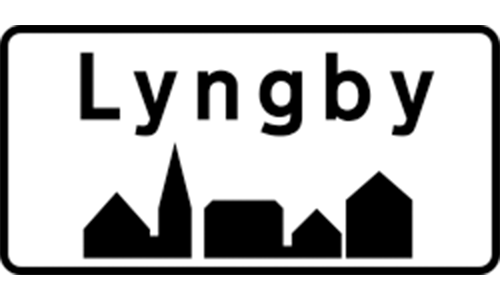
Dette tegn indikerer begyndelsen på et byområde eller en opbygget zone. Dette betyder typisk, at den generelle hastighedsgrænse for byområder (f.eks. 50 km/t i mange lande) automatisk gælder, medmindre andet er underskrevet, og chauffører skal være opmærksomme på øget fodgænger- og køretøjstrafik.
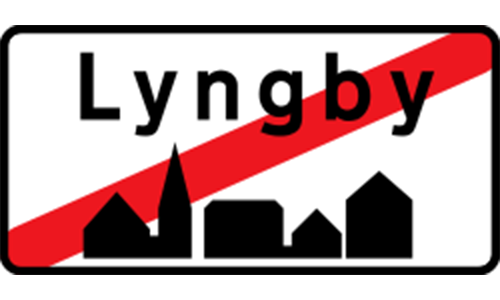
Dette tegn markerer afslutningen på et byområde eller en opbygget zone. Når man passerer dette tegn, gælder den generelle hastighedsgrænse for landdistrikterne veje typisk, og chauffører skal justere deres hastighed i overensstemmelse hermed, da trafikforholdene og fodgængertilstedeværelsen kan ændre sig.
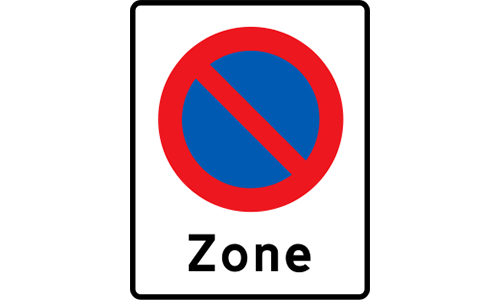
Dette tegn indikerer begyndelsen på en zone, hvor parkering er forbudt. Dette betyder, at køretøjer ikke må parkeres på vejen inden for den udpegede zone, skønt kort stop af afhentning/aflevering kan være tilladt afhængigt af lokale regler, medmindre de er yderligere begrænset.
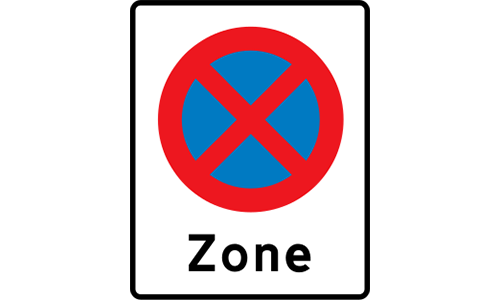
Dette tegn indikerer begyndelsen på en zone, hvor både stop og parkering er forbudt. Dette er en mere restriktiv regel end ingen parkering, hvilket betyder, at køretøjer ikke kan stoppe af nogen grund, selv kort, medmindre det er i et trafikprop, at adlyde et andet trafikskilt eller i en nødsituation.
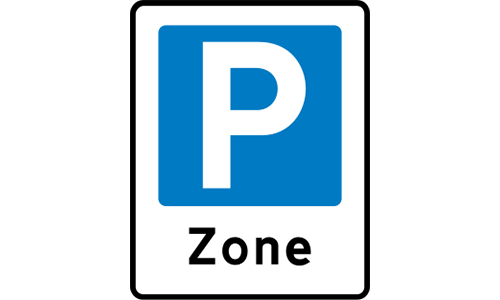
Dette tegn indikerer begyndelsen på en zone, hvor parkering generelt er tilladt. Drivere skal stadig kigge efter specifikke parkeringspladser, markeringer eller yderligere tegn i den zone, der kan indikere eventuelle specifikke begrænsninger, såsom tidsgrænser eller betalingskrav.
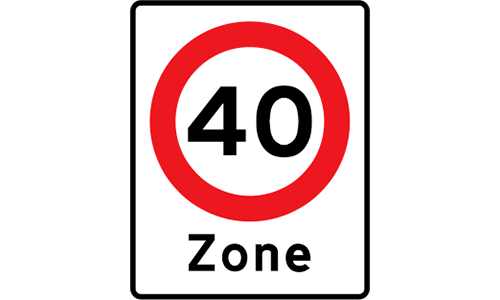
Dette tegn indikerer begyndelsen på en zone, hvor en specifik lokal hastighedsgrænse (f.eks. 40 km/t i dette tilfælde) gælder i hele zonen. Denne hastighedsgrænse forbliver i kraft for alle køretøjer i zonen, indtil en ende af zoneskilt eller et andet hastighedsgrænse tegn er stødt på.

Dette tegn indikerer begyndelsen på en zone, hvor tunge varer køretøjer er forbudt at komme ind. Denne foranstaltning er ofte indført for at reducere støj, forurening eller trafikbelastning på specifikke områder, såsom bolig- eller miljøfølsomme zoner, med det formål at forbedre de lokale levevilkår.
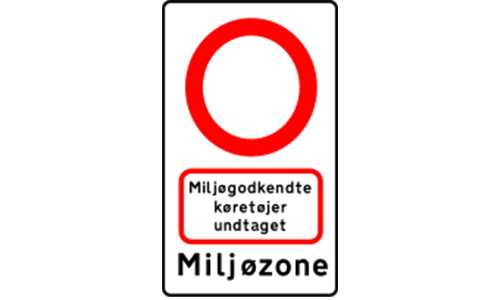
Dette tegn indikerer begyndelsen på en zone med lav emission. I sådanne zoner kan ældre eller flere forurenende køretøjer være begrænset eller krævet for at betale et gebyr for at komme ind, med det formål at forbedre luftkvaliteten og reducere miljøpåvirkningen i by- eller følsomme områder.
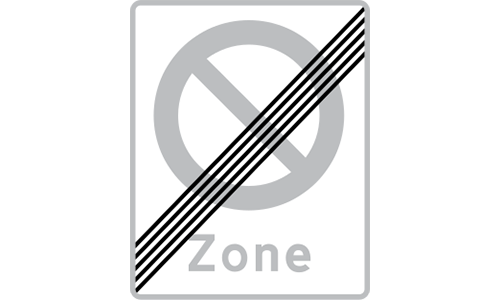
Dette tegn markerer afslutningen på en zone, hvor parkering tidligere var forbudt. Ved vedtagelse af dette tegn gælder generelle parkeringsregler, der gælder for det omkringliggende område, og parkering kan nu tillades, medmindre andet er angivet med forskellige tegn eller vejmærker.
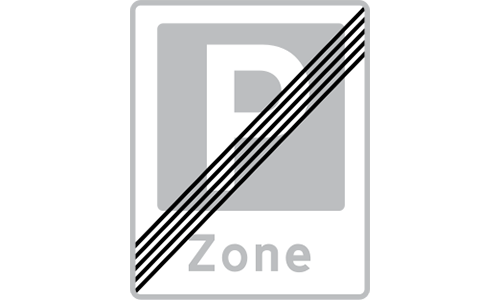
Dette tegn markerer afslutningen på en zone, hvor parkering generelt var tilladt. Ud over dette punkt kan parkering blive forbudt eller underlagt forskellige og potentielt strengere begrænsninger, og chauffører bør se efter andre tegn for at bekræfte lokale regler og undgå overtrædelser.
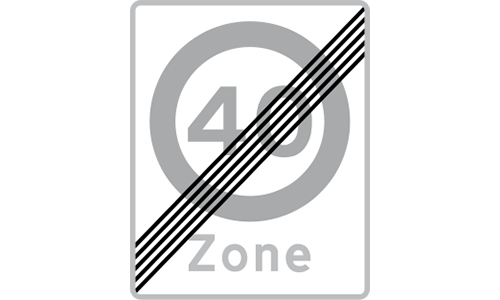
Dette tegn indikerer afslutningen på en zone, hvor en specifik lokal hastighedsgrænse var i kraft. Når det passerer dette tegn, gælder den generelle hastighedsgrænse for vejtypen eller -området, medmindre der straks opstår et andet hastighedsgrænse -tegn, hvilket kræver, at chauffører justerer deres hastighed i overensstemmelse hermed.
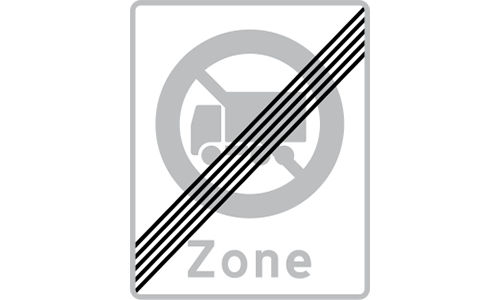
Dette tegn markerer afslutningen på en zone, hvor tunge varer køretøjer tidligere var forbudt. Ud over dette punkt er der generelt tilladelse til at rejse på vejene på vejen igen, medmindre andre specifikke begrænsninger eller trafikregler er angivet med efterfølgende skiltning.
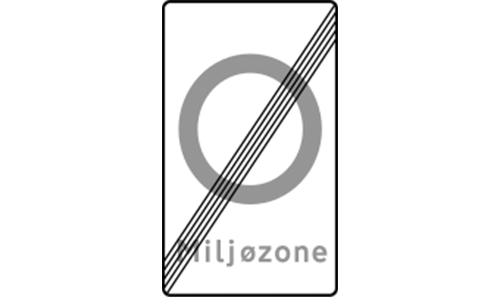
Dette tegn markerer afslutningen på en zone med lav emission. De specifikke miljøbegrænsninger på køretøjsemissioner, der anvendte inden for denne zone, er ikke længere i kraft ud over dette punkt, hvilket betyder, at køretøjer, der tidligere var begrænset, nu kan komme ind, og generelle trafikregler gælder.
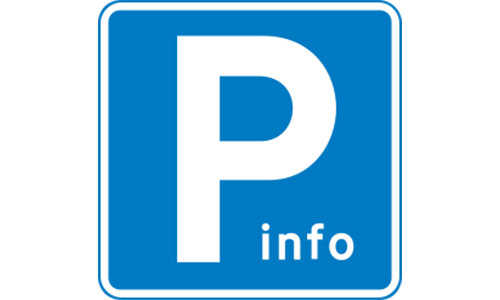
Det signaliserer typisk, at specifikke parkeringsregler, såsom betalingskrav, tidsgrænser eller udpegede parkeringsområder, vil være i kraft inden for zonen, og vejlede drivere om, hvordan og hvor de skal parkere.
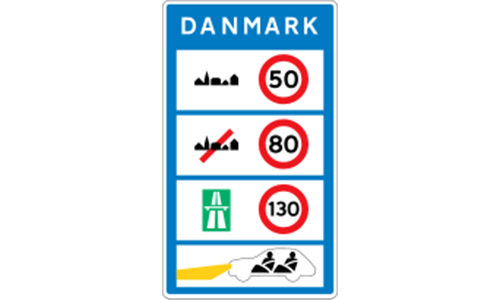
Det tjener som en påmindelse om de maksimale hastigheder for byområder, landdistrikter, motorveje og motorveje, hvilket hjælper chauffører med at overholde standardbestemmelserne, når der ikke er specifikke hastighedsgrænse -tegn.
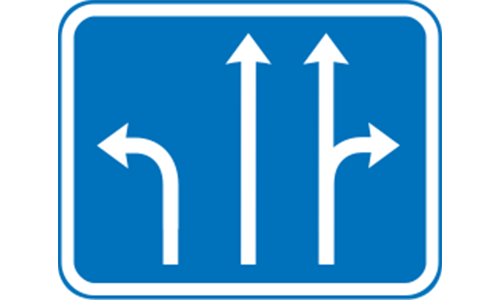
Dette skilt giver forhåndsoplysninger om de obligatoriske retninger for hver bane ved et nærliggende kryds. Drivere skal placere deres køretøjer i den rigtige bane i henhold til deres tilsigtede kørselsretning for at sikre glat og sikker navigation gennem krydset og undgå pludselige baneændringer.
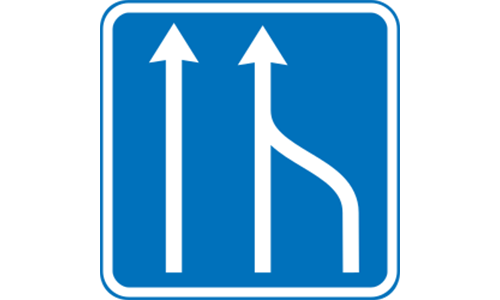
Antallet af baner, der ligger foran, reduceres, hvilket kræver trafik fra en af banerne (typisk den, der er angivet med den fusioneringspil) for at smelte sammen i de resterende baner. Drivere skal forberede sig på at justere deres hastighed og position sikkert og give efter for trafik allerede i den fortsatte bane.
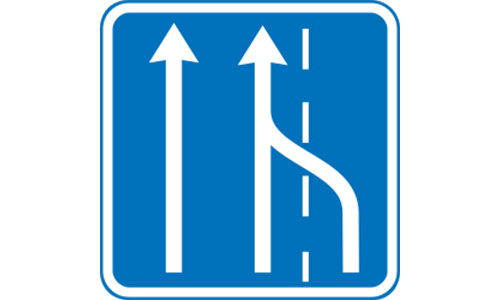
Dette tegn indikerer, at en af de eksisterende baner vil ende foran, og chauffører i øjeblikket i denne bane skal ændre sig til en tilstødende bane for at fortsætte deres rejse. Det er vigtigt at signalere intentioner tidligt, kontrollere blinde pletter og finde en sikker mulighed for at flytte ind i den fortsatte bane uden at hindre anden trafik.
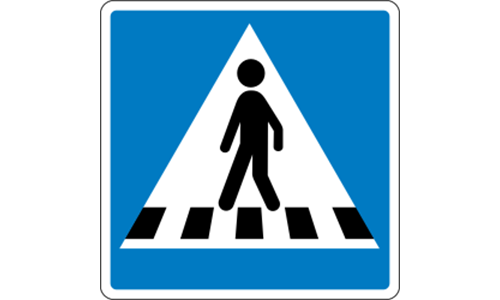
Dette tegn indikerer, at der er en markant fodgængerovergang foran. Drivere skal være parat til at bremse, udvise forsigtighed og stoppe om nødvendigt for at give fodgængere mulighed for at krydse sikkert, da fodgængere normalt har prioritet ved sådanne krydsninger.
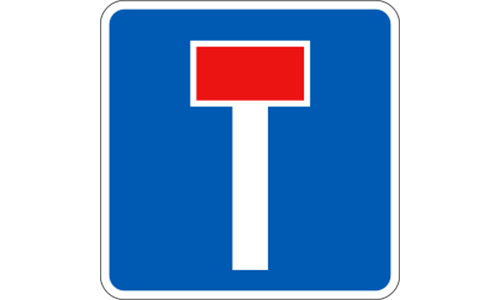
Dette tegn indikerer, at vejen foran er en blindgyde, hvilket betyder, at der ikke er nogen gennem adgang til køretøjer. Drivere skal være parat til at vende sig eller finde en alternativ rute, hvis de havde til hensigt at passere, da kontinuerlig passage ikke er mulig.
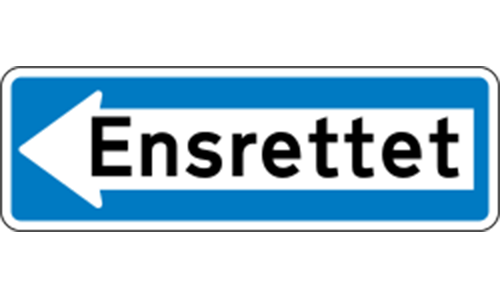
Dette tegn indikerer, at vejen er en envejsgade, hvilket betyder, at al trafik skal rejse i den retning, der er angivet med pilen. Drivere må ikke køre mod den udpegede strøm af trafik, da dette skaber en alvorlig fare.

Dette tegn indikerer en anbefalet rute for cyklister. Selvom de ikke altid er obligatoriske, er disse ruter ofte designet til at være sikrere, mere naturskønne eller mere praktiske til cykling, der opfordrer cyklister til at bruge dem til deres rejse.
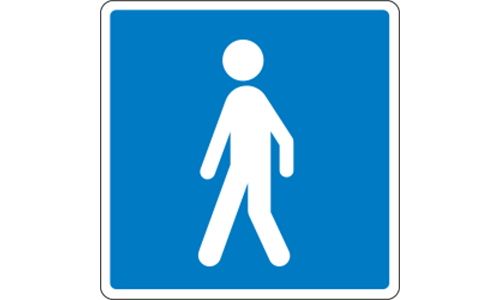
Dette tegn angiver en anbefalet rute for fodgængere. Disse ruter er typisk designet til at være sikre, tilgængelige og behagelige til at gå, og vejlede fodgængere til passende stier væk fra køretøjstrafik, hvor det er muligt.
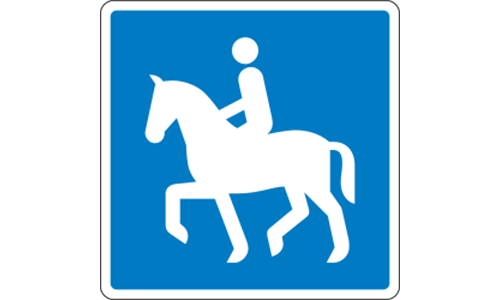
Dette tegn indikerer en anbefalet rute, der specifikt er udpeget til rytter (hestekørere). Selvom de ikke altid er obligatoriske, er disse ruter ofte designet til at være sikrere, mere egnede eller lovligt udpeget til heste, der leder ryttere til passende stier og sikrer deres sikkerhed væk fra generel køretøjstrafik.
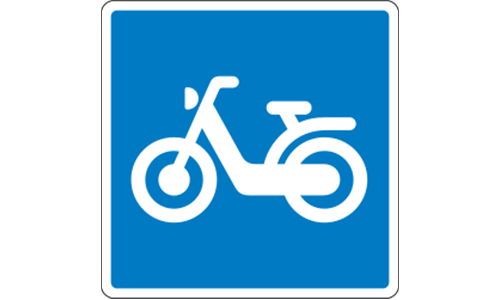
Disse ruter vælges ofte for at give mere sikker eller mere effektiv passage til knallerter, vejledende ryttere langs passende veje eller baner, der kan være bedre rustet til at håndtere knallert trafik eller for at undgå visse overbelastede områder.
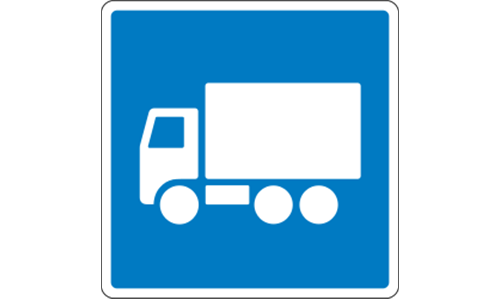
Dette tegn indikerer en anbefalet rute, der specifikt er betegnet til tunge gods køretøjer. Disse ruter er typisk valgt til at omgå uegnede veje, minimere overbelastning, direkte tung trafik væk fra boligområder eller føre til specifikke industrielle zoner, optimere trafikstrøm og sikkerhed.
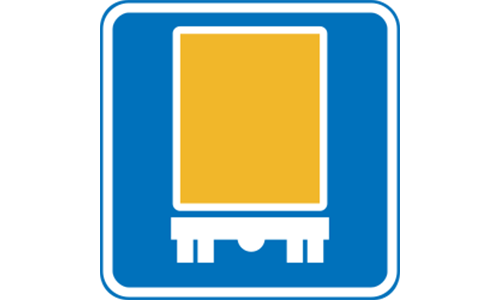
Dette tegn indikerer en anbefalet rute, der er specifikt udpeget til køretøjer, der transporterer farlige goder. Disse ruter er etableret for at direkte farlig last væk fra befolkede områder, følsomme miljøer eller tunneler, hvilket forbedrer den offentlige sikkerhed og minimerer risici i tilfælde af en hændelse.
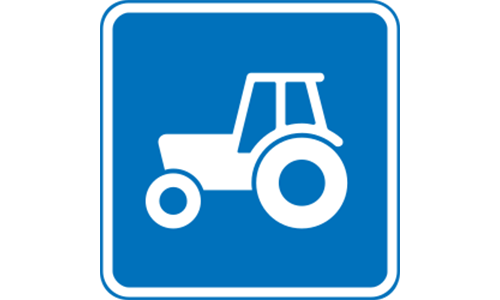
Disse ruter vælges normalt til at dirigere landbrugs- eller byggeveje langs egnede veje, der kan rumme deres størrelse og vægt, minimere forstyrrelse af anden trafik eller beskytte sårbare vejoverflader.
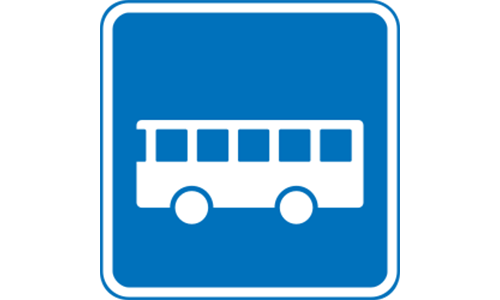
Dette tegn indikerer en anbefalet rute, der er specifikt udpeget til busser. Disse ruter er typisk en del af et offentligt transportnet, der styrer buschauffører langs effektive og udpegede korridorer for at opretholde tidsplaner og lette passageropsamling og aflevering.
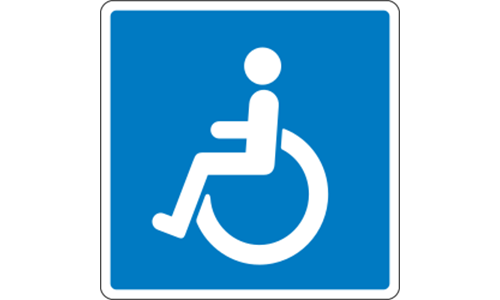
Dette tegn giver information eller instruktioner, der er relevante for handicappede, især dem, der bruger kørestole. Det kan indikere tilgængelige faciliteter, udpegede ruter eller specifikke regler, der er designet til at hjælpe handicappede med at navigere i miljøet sikkert og let.
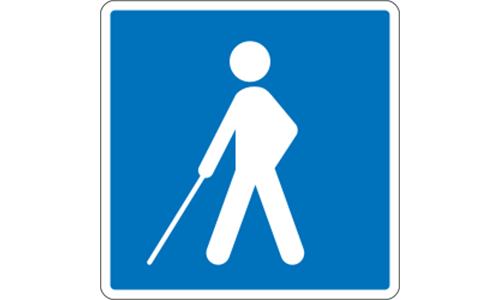
Dette tegn giver information, der specifikt er beregnet til synshæmmede fodgængere. Det kan indikere et udpeget krydsningspunkt, et taktilt fortovsområde eller andre faciliteter designet til at hjælpe sikker navigation for dem med nedsat vision, hvilket forbedrer deres sikkerhed og uafhængighed.
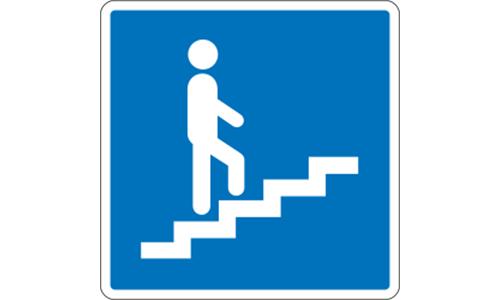
Dette tegn indikerer tilstedeværelsen af en fodgængerovergang, som er en bro designet til fodgængere til at krydse en vej eller jernbanespor sikkert over jordoverfladen. Dette adskiller fodgængertrafik fra køretøjstrafik, hvilket forbedrer sikkerhed og forbedring af trafikstrømmen markant.
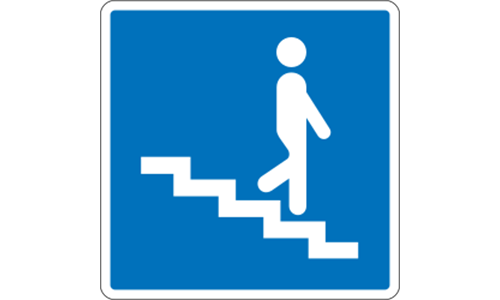
Dette tegn indikerer tilstedeværelsen af en fodgængerundergang, som er en tunnel designet til fodgængere til at krydse en vej eller jernbanespor sikkert under jordoverfladen. Dette adskiller fodgængertrafik fra køretøjstrafik, hvilket forbedrer sikkerhed og forbedring af trafikstrømmen markant.
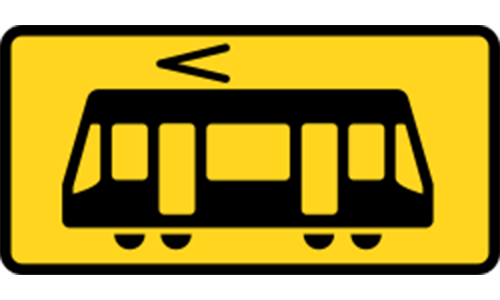
Dette tegn indikerer et udpeget stop for let jernbanetransit, såsom sporvogne eller gadevogne. Passagerer skal vente på dette tydeligt markante sted for at gå ombord på det lette jernbanekøretøj og lette organiseret og effektiv brug af offentlig transport.
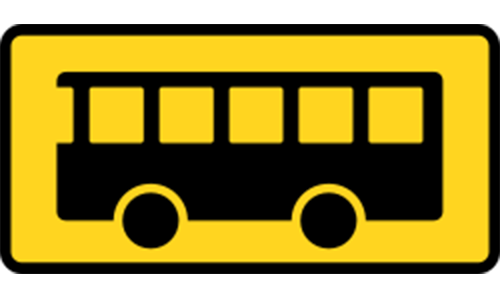
Dette tegn indikerer et udpeget stop for busser. Passagerer skal vente på dette tydeligt markerede sted for at gå ombord på offentlige busser, der opererer på ruten, hvilket sikrer ordnede og effektive offentlige transporttjenester.
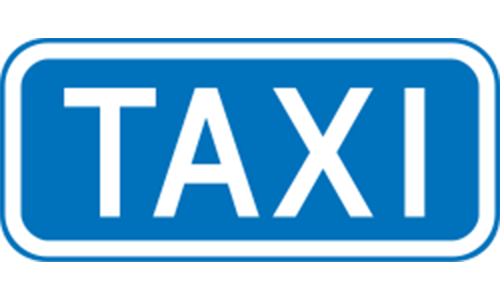
Dette tegn udpeger et område, der specifikt er forbeholdt taxaer til at vente på, at passagerer eller til passagerer går ombord på taxaer. Andre køretøjer er typisk forbudt at stoppe eller parkere i dette område for at sikre tilgængelighed for taxaer og opretholde strømmen af offentlig transporttjenester.
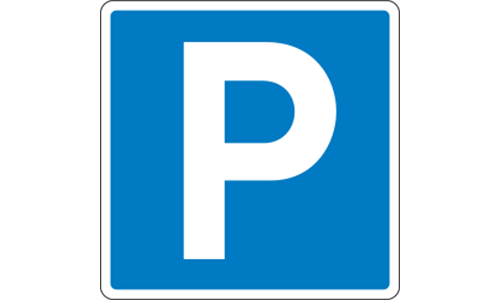
Drivere skal altid kontrollere for yderligere tegn, vejmarkeringer eller lokale regler, der kan specificere betingelser, såsom tidsgrænser, betalingskrav eller udpegede parkeringspladser for at sikre overholdelse.
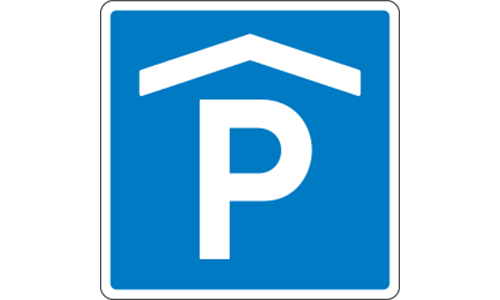
Dette tegn indikerer specifikt en indendørs parkeringsfacilitet, såsom en parkeringsplads med flere etager eller en underjordisk garage. Drivere, der søger dækket eller mere sikker parkering, skal følge dette tegn for at få adgang til det udpegede indendørs område.
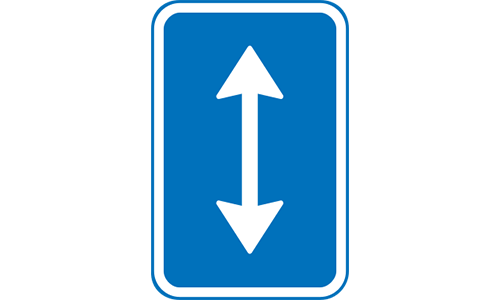
Dette tegn, der ofte ledsager et parkeringsreguleringsskilt, indikerer, at parkeringsreglen, der vises (f.eks. Tilladt parkering, ingen parkering) gælder for vejsegmentet både før og efter skiltplaceringen.
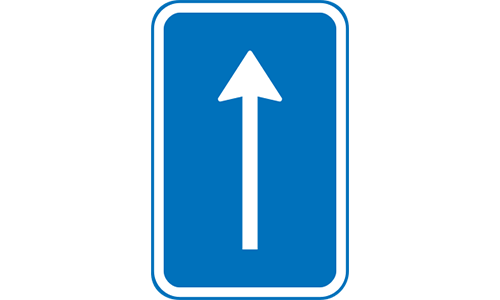
Dette tegn, typisk kombineret med en parkeringsregulering, indikerer, at parkeringsreglen (f.eks. Parkering tilladt, ingen parkering) gælder fra skiltplaceringen og fortsætter efter den i retning af rejsen.

Dette tegn, normalt parret med en parkeringsregulering, indikerer, at parkeringsreglen gælder for vejsegmentet før skiltplaceringen. Det markerer i det væsentlige opsigelsespunktet for en specifik parkeringsregulering, der var i kraft forud for det.
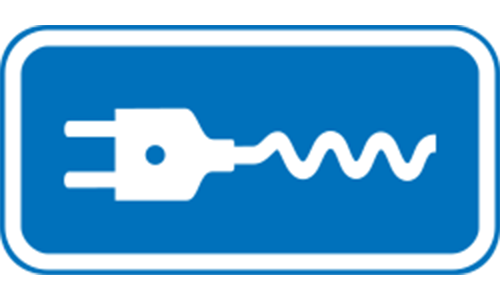
Dette tegn angiver placeringen af et elektrisk køretøjsopladningspunkt. Det leder chauffører af elektriske køretøjer til en facilitet, hvor de kan oplade deres køretøjsbatteri og fremme brugen af bæredygtig transport.
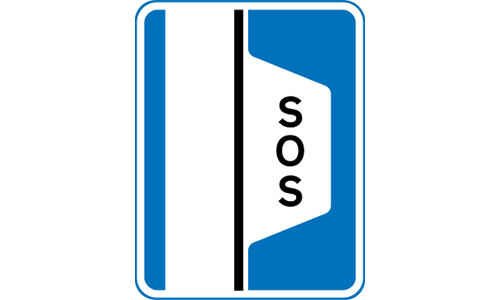
Dette tegn indikerer en sammenbrudsbugt eller et nødopkaldspunkt, der ofte findes på motorveje eller i tunneler. Det leder chauffører til et sikkert sted, hvor de kan stoppe i tilfælde af en sammenbrud og få adgang til nødkommunikationstjenester, hvilket forbedrer sikkerheden under uventede køretøjsspørgsmål.
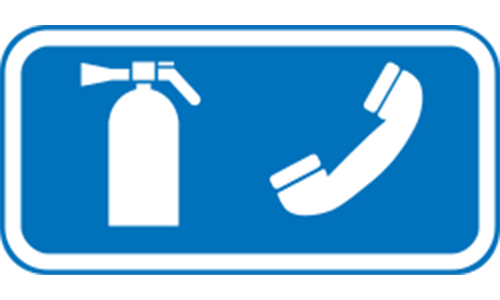
Dette tegn indikerer tilgængeligheden af en ildslukker og en nødtelefon på det specificerede sted. Dette er afgørende sikkerhedsbestemmelser, især i lukkede miljøer som tunneler, til brug i nødsituationer såsom køretøjsbrande eller ulykker.

Dette tegn indikerer, at du nærmer dig en tunnel. Drivere skal være opmærksomme på specifikke tunnelregler, der kan omfatte reducerede hastighedsgrænser, obligatorisk brug af forlygter og begrænsninger for at stoppe eller overhale, for sikkerhed inden for det lukkede rum.
 Bestå eksamen nemt med premium-øvelsestests | Lås op for alt med 7-dages-planen
Bestå eksamen nemt med premium-øvelsestests | Lås op for alt med 7-dages-planen  Tilbuddet slutter i
Tilbuddet slutter i 
